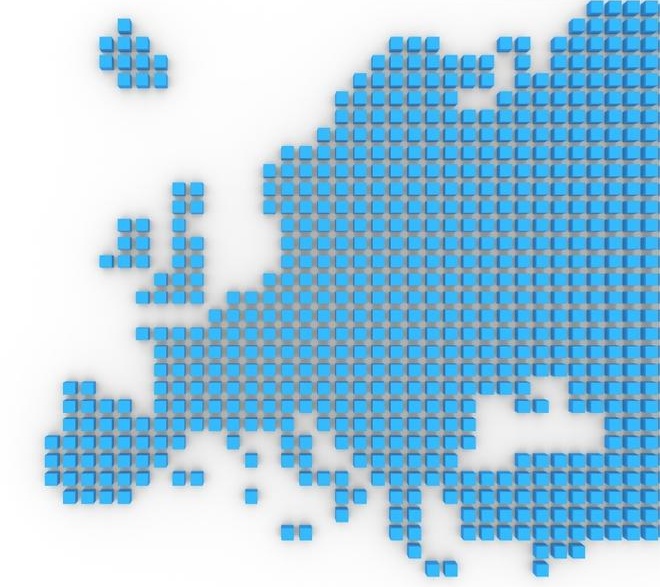One of the ways of obtaining patent protection in the territory of the European Union member states is a European patent, granted by the European Patent Office (EPO) in Munich. The European patent does not constitute a unitary protection right, but it is a bunch of national patents that are subsequently subject to validation in 38 countries being the signatory parties to the European Patent Convention [1] (EPC). Thus, the protection obtained by means of a European patent is valid only in those countries that signed the EPC, which have been indicated by the applicant for patent validation.
In December 2012, the European Union member states and the European Parliament agreed on a legislative initiative that opened the way for establishing a European patent with unitary effect throughout the whole European Union (EU). The unitary patent will enable the inventors to obtain patent protection in all countries participating in the unitary patent system, without the requirement of proceeding with validation. It is currently expected that the introduction of the European unitary patent system shall take place in the second half of the year 2022.
A European patent now
A European patent is granted by the European Patent Office, located in Munich, under the European Patent Convention (EPC). Completing the patent procedure at the EPO makes it possible to obtain a patent for an invention in the 38 EPC member states. The procedure intended to obtain a European patent with legal effects in the selected EPC countries consists of two parts. The first part is the procedure for granting a European patent, which includes the following stages:
– formal and legal examination of the application for a European patent;
– conducting a European search by an EPO examiner, ended with a presentation to the Applicant of an opinion on patentability of an invention, together with a list of documents that will be taken into account in the assessment of novelty and the inventive level;
– substantive examination, during which it is verified whether the invention meets the requirements of novelty, inventive level and whether it is suitable for industrial application;
– issuance of a decision on granting a patent.
If a European patent is granted, the patent holder is obliged to carry out the second part of the procedure, i.e. the so-called validation of the European patent. In order to validate a European patent in the selected country (from among the 38 parties to the European Patent Convention), the patent holder, within three months from the date of publication of information about granting the European patent, is obliged to file with the national patent office a translation of the European patent into the official language of the selected country and pay the required national official fees. Due to the high costs resulting from the requirement of filing translations and paying the official fees, most European patents are only validated in certain countries selected by patent holder.
In addition, a European patent, once validated in a given country, is treated equally with a national patent. Accordingly, the scope of protection of an invention protected by a European patent can be interpreted in different ways depending on the case law of a given country. In other words, the invalidation of a European patent, for example, in Poland before the Polish Patent Office, has effect only in the territory of Poland. If a party wants to invalidate a European patent in the territory of another country where it was validated, it is necessary to conduct separate court proceedings in the relevant countries. In summary, a European patent validated in the territory of the selected countries has the same effect and is subject to the same conditions as a national patent granted by a given country, so it is in practice a bunch of national patents that are independent of one another.
A European patent with unitary effect – an additional way of obtaining protection
After many years of negotiations, the green light has been given to the introduction of the so-called unitary patent system. The process was initiated by two Regulations of the European Parliament and of the Council (EU) No. 1257/2012 [2] and 1260/2012 [3] establishing the unitary patent system, which came into force on January 20, 2013. The unitary patent system will establish a European patent with unitary effect and a Unitary Patent Court (UPC) responsible for European patents in the 17 currently participating European Union member states. The European patent with unitary effect will reduce the complexity and the costs of validation, as it will have uniform effect in all 17 countries if, after a European patent is granted, the patent holder applies for registration of a European patent with unitary effect.
| Member states of the unitary patent system |
| Austria, Belgium, Bulgaria, Denmark, Estonia, Finland, France, Germany, Italy, Latvia, Lithuania, Luxembourg, Malta, Netherlands, Portugal, Slovenia, Sweden |
Along with introduction of the European patent with unitary effect, the examination procedure for European patent applications will not be changed. What will be changed, however, will be the introduction of an additional option in the proceedings after a decision on granting European patents. Thus, after a European patent has been granted, the patent holder will be able to validate the European patent in each EPC member state, as it has been done so far, or, in accordance with the new possibility, during the validation procedure the holder will be able to file an application for registration of a European patent with unitary effect and thus obtain a unitary patent for the 17 participating countries in the unitary patent system, and additionally conduct national validations in non-participating countries, as it has been done so far. Thus, it will be up to the patent holder, based on one’s own protection strategy, to decide which option to use.
Unitary Patent Court
A necessary element for the launch of the so-called unitary patent system, in addition to the introduction of a European patent with unitary effect, is the establishment of a Unitary Patent Court (UPC). The UPC will have a two-instance structure. The Court of First Instance will include a central branch and local and regional branches. The central branch will be based in Paris and have branches in Munich and originally in London (due to Brexit, its place may be taken by Milan). Local and regional branches will be located in each member country of the system. The Court of Appeals will be located in Luxembourg.
The UPC will be responsible for infringement and invalidation proceedings for all European patents with unitary effect. The local branches will have jurisdiction over infringement cases, while the central branch will adjudicate on the European patent invalidation cases. A key difference to the proceedings currently conducted will be the ability to enforce the ruling made by the UPC’s local branches in each member country of the system. This will result in a situation where it will be necessary to conduct only one dispute, before the court of one country. Thus, it should be stressed at this point that a unitary patent may also bring an undesirable effect for patent holders, since they may lose patent protection in all the countries covered by a European patent with unitary effect in consequence of a single court decision. For this reason, the strategy of protecting one’s inventions chosen by patent holders will be important, as obtaining a European patent with unitary effect will not always be the most desirable option.
What about Poland?
From the beginning Poland has been a member of the EU’s enhanced cooperation procedure seeking to establish the unitary patent system, but has not signed the UPC Agreement [4]. Thus, currently, Poland will not be a member of the unitary patent system. European patents will continue to be valid in the territory of Poland through the validation procedure before the Polish Patent Office. Disputes over the validity of these exclusive rights, as well as disputes over their infringement, will remain in the jurisdiction of the competent national authorities.
Will Poland join the unitary patent system? This is the question that comes up regularly, and the one to which there is still no clear answer. The regulations related to the unitary patent system do not provide a timeframe for the new countries to join it. So it is most likely that in the near future Poland will participate as an observer and watch how the whole system works. The decision to join and contribute to the co-creation of the unitary patent system will certainly be made some time in the future.
[1] https://isap.sejm.gov.pl/isap.nsf/DocDetails.xsp?id=WDU20040790737
[2] https://eur-lex.europa.eu/legal-content/PL/TXT/?uri=celex%3A32012R1257
[3] https://eur-lex.europa.eu/legal-content/pl/TXT/?uri=celex%3A32012R1260
[4] https://eur-lex.europa.eu/legal-content/PL/TXT/PDF/?uri=CELEX:42013A0620(01)&from=EN

Maciej Fajkowski holds the position of a Junior Patent Specialist and a Patent Attorney Trainee.
His main tasks include preparation of documentation and verification of European patent validation texts, conducting research and patent searches in the state of the art in terms of patentability and purity, and correspondence with the Polish Patent Office, foreign patent offices and the clients. In cooperation with patent attorneys, he also prepares patent applications (PL, PCT, EP) and coordinates further application procedures.
On a daily basis, he supports the process of patent registration for large customers from the field of electronic industry and production of equipment for industry and households.
Maciej is a graduate of the Warsaw University of Technology, which he graduated from the Faculty of Transport, obtaining the title of an engineer with a specialization in safety engineering and transport ecology. He is a member of the Polish Chamber of Patent Attorneys.
E-mail: maciej.fajkowski@patpol.pl

